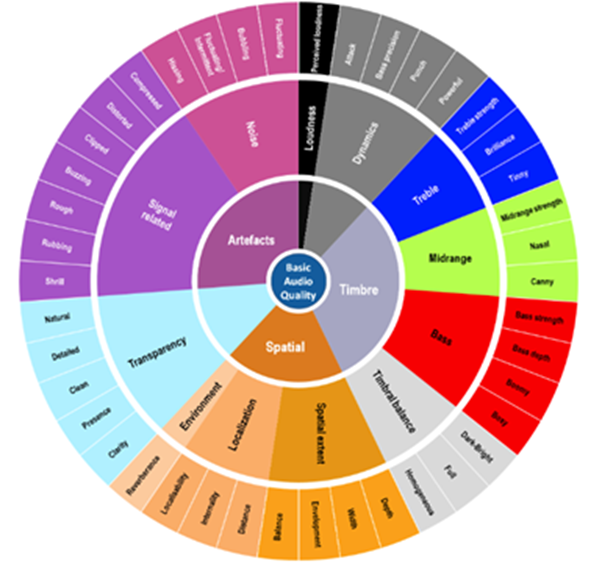Sensory Evaluation Study
An important aspect of music listening is the perceptual experience of audio quality, which is often affected by hearing loss and hearing aids. Numerous studies have investigated judgments of audio quality and their underlying perceptual dimensions in normal hearing listeners; see the ‘sound wheel’ image below as an example of how audio quality might be described, using terms such as full, tinny, rough, clean, dark and bright. Despite this research, there is less work focusing on hearing loss.

As part of the Cadenza challenges, listeners with hearing loss will rate music processed by your systems, in terms of overall audio quality, and on related important perceptual dimensions. To develop these dimensions and associated rating scales, we are performing a sensory evaluation study using descriptive analysis methods. In this work, a group of listeners with hearing loss firstly provide single-word perceptual terms to describe various music excerpts provided to them. Then, they come together across three focus groups to discuss the meaning and grouping of different terms, and reach a consensus regarding the most important perceptual dimensions for audio quality, how these can be defined, and how they can be rated or scored in the challenges. Importantly, these dimensions describe audio quality, as opposed to indicating preference or liking for what is heard. It is on these dimensions, alongside a rating of overall audio quality, that your systems will be subjectively rated by listeners.
References
- Perceptual characteristics of audio, https://forcetechnology.com/-/media/force-technology-media/pdf-files/unnumbered/senselab/tech-document-perceptual-characteristics-of-audio-uk.pdf?la=en.